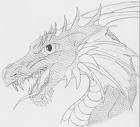Egyptian archaeologists discovered a new tomb belonging to the workers who built the great pyramid. This illustrates how the workers lived and ate more than 4000 years ago.
Thousands of people who build the remaining wonders of the ancient world was accustomed to eating meat regularly, three months working in shifts, and given the honor of burial in the tomb of mud bricks in the shadow of the sacred pyramid that they do.
"Newly discovered tomb was in the 4th dynasty of Egypt (2575 BC to 2467 BC) when the great pyramid was built," according to the head of the Supreme Council of Ancient Egypt, Zahi Hawass Goods. A number of tombs of the pyramid builders was first discovered in the area in 1990. These findings indicate that workers are paid, not a slave to the popular imagination.
"This tomb was built beside the tomb of the king that the pyramid shows that these people can not in any way is called a slave," Hawass said in a statement. "If they were slaves, they would not be able to build next to the tomb of their king," he said.
Evidence from the site, Hawass said, showed that some 10,000 workers who worked to build some pyramids were supplied at least 21 cows and 23 sheep to eat them every day from farms in northern and southern Egypt. The workers were rotated every three months. Burial site is intended for workers who died during construction.
"Discoveries like this reveal other aspects of ancient Egyptian society, rather than mere stone monuments and temples are often visited by priests, the rulers, and nobles," said Salima Ikram, a professor of Egyptology at the American University , Cairo, Egypt.
"It is important to find the tomb belonging to lower class people are not made of stone that tells of the social organization and the relative wealth of many people," he said


No comments:
Post a Comment